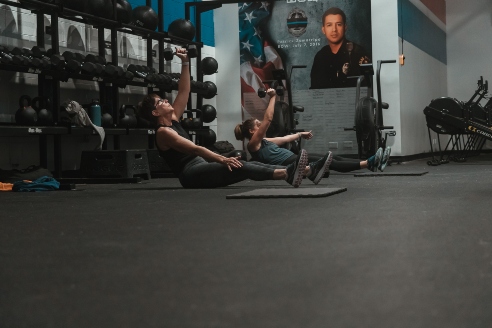You may have been able to get away with not doing strength training in the past, but you noticed that your joints started to creak and crack after a hard session as you aged. We may not like to admit it, but our bodies are no longer able to handle the same amount of training as they did at 21. It doesn’t mean we can’t achieve high performance levels in later life. We just need to find ways to maximize our potential. As you search for sustainable ways to improve your performance and training, adding strength and conditioning will not only be necessary but also inevitable.
What Happens to Us as We Age
Strength training is more than a performance enhancer. Strength training helps maintain a healthy musculoskeletal environment as you age. Around the age of 30, our muscle mass begins to decline at a rate of 3-8% per decade. Strength training is essential to reducing the effects of muscle loss and aging.
As we age, bone loss is an important health concern. The effects of decreased osteoblast activity (bone building) are compounded as we age by increased osteoclast formation and function. This excessive bone destruction leads to a reduction in skeletal strength and volume, and increases the risk of fracture. Age-related changes to sex hormones affect normal skeletal biology, along with changes in mechanisms that regulate lifespan.
The decline in estrogen following menopause causes a significant loss of bone, both in the cortical and in the trabecular compartments in women (Riggs and al. Manolagas, 2000. This is due to an increased bone turnover rate, where osteoclasts become free from estrogen inhibition and increase bone resorption. The combined relationship between osteoclastic bone resorption (and bone formation) triggers an increased number of osteoblasts.
Low levels of androgens in men also lead to increased bone remodeling, and net bone loss. (Daniell 1997; Katznelson and al. In men, low levels of androgens also cause increased bone remodeling and net bone loss (Daniell 1997, Katznelson et al. 2000).
Not only do our bones suffer, but also our connective tissues. As we age, ligaments lose flexibility and cartilage becomes more vulnerable to stress. These changes may lead to arthritis or stiff joints.
What are the Benefits of Strength Training?
Consistent strength training has many benefits for your health and performance. In order to combat the above changes, as well as others that have not been discussed previously, adding a strength training regimen at least twice per week will help you mitigate loss and improve your health, but also performance.
The following benefits are included (but not limited to).
Bone density increases reduces fracture risk
Increased muscle mass reverses the trend of age related muscle mass loss
Joint flexibility is increased and symptoms of arthritis are reduced.
Reduced injury risk
Maintain or increase ratio of body fat to lean mass
Strength, improved body mechanics, posture, and balance
Improved chronic disease management such as glucose control in type 2 diabetes
Energy levels increase
Endorphins released
Better Sleep
Reduced cardiovascular risk factors
Cognitive function improved
Improved athletic performance through the ability to recruit more muscle fibre
It can also be helpful to focus on postural exercises to target specific areas, such as the upper-back to strengthen the muscles that run between the shoulder blades. This helps to prevent sloping or rounded shoulders.
The benefits of strength training can be experienced at any age, but they are particularly important as we age. Strength training is essential to improve performance and health.
How to Integrate your Strength Program
There are a few things you should consider before diving into a strength training program. Consider the following when starting your program: your experience level, your equipment, your time availability, your training schedule, any limitations caused by injury or medical conditions and whether you want to hire a professional coach or trainer. Here are some elements that can help you create a successful program, given all the factors mentioned above:
It is important to know that any strength program will have an adaptation period. All individuals starting a program will experience this. This phase can last anywhere from 2 to 6 weeks, depending on your previous strength level. Remember to ease into any program. Start slowly and don’t go all out.
Warming up is important: A warm-up program is essential to your strength training. If we begin our workouts stiff and tight, we put ourselves at risk for injury. Before any session, try to do some foam rolling or dynamic stretching, or light cardio.
As you start to include exercises in your program, focus first on your form! If your form is incorrect, it does not matter what weight you are using. This is important as bad form can cause injury. Modify the exercise if you cannot complete it due to a limited range of movement, an injury in the past, etc. If you are unable to complete a squat because of a lack of ankle mobility, hip mobility or thoracic flexibility: don’t push yourself into a deep squat. You can still reap the benefits of modifying an exercise so that it is within your range of mobility. Consulting a professional can also be a good way to receive advice about your form and modifications.
Recovery: Include 2 strength sessions per weekly to your current training plan. You can pair your strength sessions with a shorter neuromuscular work or recovery ride (if riding before or after a strength session is your preference). Take at least one day off each week from strength and cycling training.
Whether it was due to good genes or luck, many of us older adults were able to get by without strength-training. Some people have been injured because they did not follow a balanced training program. No matter where you are in life, a strength-training program will benefit you at any age.







